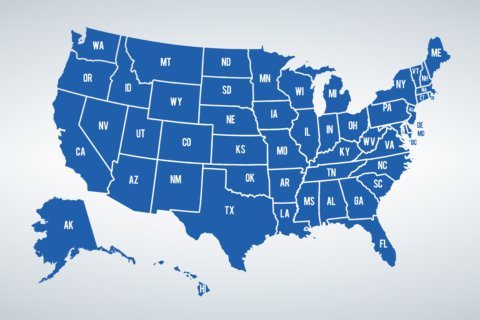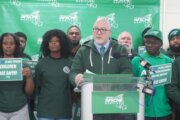With just over a week to go before thousands of longshoremen at ports on the East and Gulf Coast are due to go on strike, negotiations aimed at settling the long running contract dispute are set to resume on Tuesday.
The two sides of the dispute are the International Longshoremen’s Association and the U.S. Maritime Alliance — the management group which represents all of the ports and other stakeholders.
Parties have already agreed on money issues, with the workers set to receive a 62% pay increase over the six year life of the contract. But work rule negotiations remain unsettled.
The union said it will fight management’s proposals to further automate ports because it contends doing so will result in the loss of high-paying jobs for its members.
The USMX insists the technology ports want to install does not harm longshore employment and maintain such modernization is necessary to keep U.S. ports competitive. It also said the accompanying increase in container volumes would actually help create more union jobs.
The timing of these negotiations are critical, because the looming Jan. 15 strike deadline is only days before President-elect Donald Trump’s inauguration.
The National Retail Federation’s Vice President for Supply Chain and Customs Policy, Jonathan Gold, told WTOP a strike would be devastating to the U.S. economy, since the ports covered under this contract handle about 50% of all container traffic into and out of the country.
“We’re happy to see the ILA and USMX return to the negotiating table,” he said. “We certainly hope they get a deal done before the contract expires on Jan. 15th. If not, we want to the parties to stay at the table until a final deal is reached.”
In the mid-Atlantic region, the ports of Baltimore and Virginia are covered by the contract and would be shut down if there was a strike. The impact, regionally and nationwide, would be significant.
The Port of Baltimore had already been shut down for months in 2023 due to the Francis Scott Key Bridge collapse. It’s waterfront facility is the largest port in the country when it comes to so-called roll-on, roll-off cargo, which includes cars, heavy equipment and farm equipment.
The Port of Virginia is a key East Coast facility that moves parts for manufacturing and a large number of agricultural products.
Because of the current labor uncertainty on the East Coast, ports on the West Coast, including Los Angeles, Long Beach and Oakland have seen container volumes surge to record levels in the past several months as shippers move their products to the Pacific gateway.
After the three-day strike in October 2024 that included 45,000 workers and shutdown port operations, there have been no formal, face-to-face negotiations between the parties since November, when the ILA broke off contract talks.
Biden Administration officials, including Acting Labor Secretary Julie Su, got the two sides to agree to an extension of the current contract before there was any long-lasting damage to the economy.
“A strike at this point could be longer, which is unfortunate,” he said. “It could have a significant impact on the economy, just as President-elect Trump is taking office on January 20th.”
Several economists believe a strike will not only halt billions in trade, but also raise inflationary pressures and threaten existing supply chains.
President-elect Donald Trump has indicated that he supports the ILA when it comes to the issue of port automation.
After meeting with ILA president Harold Daggett and its executive vice president Dennis Daggett, Trump posted on Truth Social:
“I’ve studied automation and know just about everything there is to know about it,” he posted. “For the great privilege of accessing our markets, these foreign companies should hire our incredible American Workers, instead of laying them off, and sending those profits back to foreign countries.”
Get breaking news and daily headlines delivered to your email inbox by signing up here.
© 2024 WTOP. All Rights Reserved. This website is not intended for users located within the European Economic Area.







